La creatividad a menudo se romantiza como un rayo—repentino, singular, inexplicable. Pero cuando rastreas el circuito detrás de ese destello, descubres patrones: espirales de hiperfoco, constelaciones de cruce sensorial, autopistas de asociación no controladas por la inhibición ordinaria. Esos patrones no son aleatorios; son las firmas neurológicas de la neurodivergencia.
El autismo, el TDAH, la dislexia, el síndrome de Tourette y perfiles relacionados no solo co‑existen con la originalidad artística o científica—la alimentan, la estructuran y, en muchos casos, la hacen posible en primer lugar.
Este artículo viaja desde el estudio hasta el banco de laboratorio, desde cámaras de fMRI hasta clubes de jazz, para mostrar por qué las peculiaridades que los clínicos alguna vez buscaron remediar son, de hecho, los reactivos catalíticos de la invención humana. Al final, el argumento será inconfundible: la creatividad y la neurodivergencia no solo son compatibles. Son, en innumerables casos, inseparables.
Conclusiones Clave
-
Inversión de costo-beneficio cognitivo: Las características etiquetadas como “deficiencias” (por ejemplo, distracción, hiperfoco, hipersensibilidad sensorial) frecuentemente se convierten en ventajas creativas en entornos que valoran la novedad y la profundidad.
-
Brillantez específica de dominio: Los perfiles autistas, con TDAH, disléxicos y con Tourette proporcionan cada uno “superpoderes” cognitivos distintos—precisión de patrones, fluidez de ideas, holismo espacial, sincronización cinética—que se alinean con dominios creativos particulares.
-
Sinergia de redes neuronales: Los patrones de activación divergentes (co‑activación DMN-ECN en TDAH, conectividad local mejorada en autismo) se mapean directamente en etapas de ideación y refinamiento.
-
Puntos ciegos de evaluación: Las pruebas de creatividad estandarizadas y las rúbricas de aula subvaloran la ingeniosidad neurodivergente; las evaluaciones multimodales y flexibles en el tiempo revelan reservas de talento ocultas.
-
Principio de ecosistema: Los equipos que combinan perfiles divergentes (por ejemplo, sistematizadores autistas con conductores de pivote con TDAH) superan a los grupos homogéneos en la resolución de problemas complejos, confirmando que la biodiversidad cognitiva refleja la resiliencia ecológica.
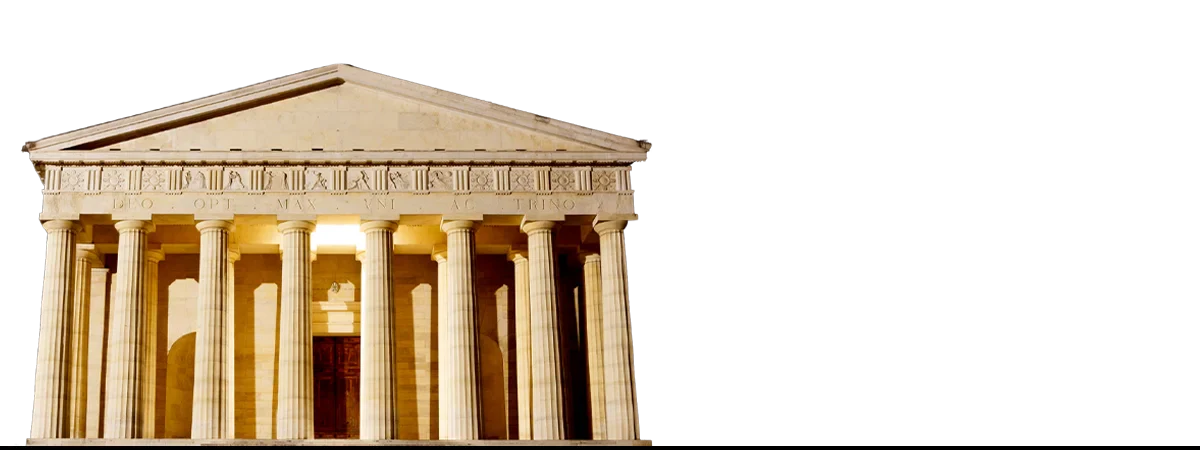

Definiendo Neurodivergencia y Neurodiversidad
La neurodivergencia no es un desvío de alguna carretera platónica de la cognición. Es uno de los propios carriles resplandecientes de esa carretera—pavimentado con materiales inesperados, inclinándose hacia vistas ocultas del tráfico principal. El término reúne una constelación de variaciones del neurodesarrollo: trastorno del espectro autista (TEA), trastorno por déficit de atención con hiperactividad (TDAH), dislexia, síndrome de Tourette y otros que se niegan a marchar en cadencia lineal. Las mentes que armonizan con los tempos culturales dominantes se etiquetan como neurotípicas, sin embargo, el ordenado binario se disuelve bajo escrutinio.
A finales de la década de 1990, la socióloga autista Judy Singer acuñó la palabra neurodiversidad, y ella propuso que estas variaciones no son ni defectos ni trastornos, sino expresiones biológicamente arraigadas dentro de la gran ecología del pensamiento humano. Así como las selvas tropicales dependen de las orquídeas y los higos estranguladores, las hormigas y los tapires, la humanidad depende de la heterogeneidad cognitiva. No hay un único plano neural, ni una línea de producción divina—solo un extenso jardín botánico de circuitos.
El modelo médico una vez enmarcó la divergencia como una enfermedad a curar; el paradigma de la neurodiversidad la reconfigura como un legado evolutivo, indispensable para la resiliencia colectiva.
Dentro de este esquema, los cazadores de patrones autistas, los soñadores espaciales disléxicos, los improvisadores con TDAH y los narradores cinéticos con Tourette no son fallos en el código. Son algoritmos alternativos, que añaden redundancia e innovación al repertorio de resolución de problemas de la especie.
La variación no es una grieta en el sistema. Es la bisagra adaptativa del sistema.

Influencia en los Procesos Cognitivos y el Pensamiento Creativo
La creatividad florece donde la percepción choca con la posibilidad, y la cognición neurodivergente moldea tanto las entradas como las salidas de maneras poco convencionales.
TDAH afloja la puerta de la atención, permitiendo que chispas periféricas se adentren y se fusionen. Lo que los clínicos llaman “distractibilidad” puede convertirse en combustible a reacción asociativo.
Autismo, por el contrario, enfoca la atención en una resolución láser, transformando los llamados “intereses especiales” en microscopios entrenados en patrones y texturas hasta que emergen arquitecturas ocultas. El trabajo empírico apoya este patrón.
En estudios de pensamiento divergente, los participantes autistas generan menos ideas totales pero más estadísticamente novedosas: cada respuesta puede ser solitaria, pero rompe el esquema con originalidad. Los grupos con TDAH a menudo superan a sus contrapartes neurotípicas en fluidez y flexibilidad, saltando a través de campos semánticos antes de que la inhibición convencional pueda acorralarlos.
Las pruebas estándar de creatividad calibradas para un ritmo normativo pasan por alto este torque: el cineasta disléxico que deletrea de oído pero crea guiones gráficos épicos en ráfagas panorámicas; el pintor autista cuyas calibraciones cromáticas revelan longitudes de onda que los neurotípicos pueden aplanar en beige.
Importante, los “defectos” clínicos también actúan como reactivos catalíticos. La hiperfocalización, notada desde hace tiempo en la literatura de investigación sobre TDAH como una absorción intensa y centrada en la tarea que puede impedir el cambio de tarea (Barkley 1997), encierra a un compositor con TDAH en improvisaciones de doce horas. La hipersensibilidad sensorial, enmarcada como una carga del autismo, se traduce en agudeza sonora o visual que capta armónicos o gradientes de color que otros pasan por alto. Las mismas características señaladas para la remediación bajo la mirada del déficit a menudo sustentan la invención bajo la lente de la creatividad.
Las tareas cronometradas en el aula—no necesariamente las Pruebas de Torrance en sí, que puntúan originalidad y elaboración—tienden a recompensar la velocidad; el brillo neurodivergente a menudo prefiere la profundidad. Los criterios de evaluación en el aula celebran párrafos ordenados; la cognición disléxica puede esculpir ideas en mapas mentales tridimensionales. Cuando la evaluación cambia—permitiendo la narración oral, la exploración sin tiempo, la respuesta multimodal—la genialidad latente sale a la superficie.
La biología ofrece pistas sobre estas divergencias:
-
Los cerebros con TDAH muestran una supresión atenuada de la red en modo predeterminado durante las tareas, permitiendo que la ensoñación funcione en paralelo con el enfoque—un incubador para enlaces entre dominios.
-
El autismo a menudo presenta una conectividad local aumentada, alimentando la detección meticulosa de patrones que subyace a habilidades de nivel savant en arte o criptografía.
-
La dislexia redirige los circuitos del lenguaje a través de regiones visuoespaciales del hemisferio derecho, correlacionándose con una excepcional capacidad para resolver problemas de visión global.
Cada perfil intercambia una moneda cognitiva por otra, demostrando que la innovación prospera en tasas de cambio, no en salarios uniformes. Y la neurodiversidad nos pide que reimaginemos aulas, lugares de trabajo y narrativas culturales para que nadie tenga que elegir entre ocultar su naturaleza y acceder a oportunidades.
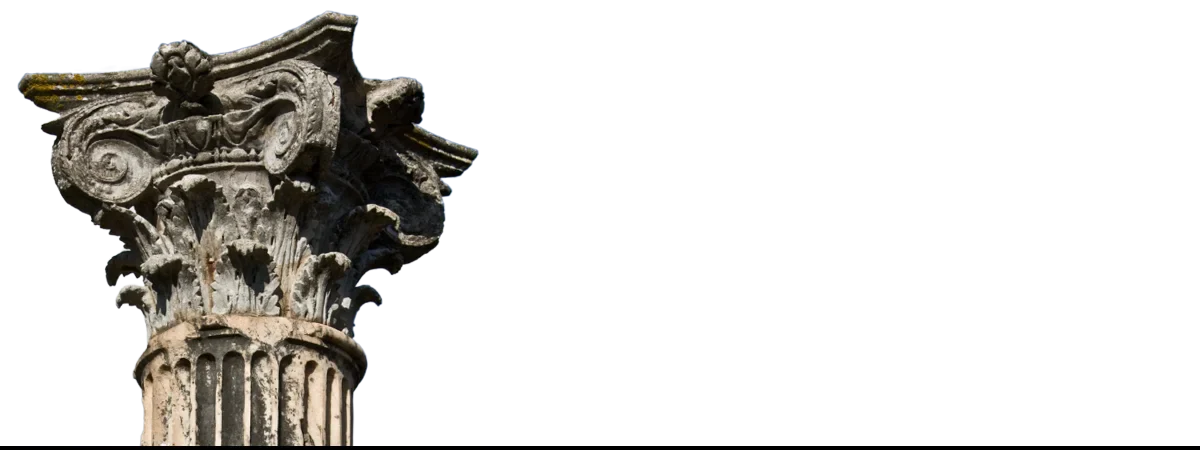

La neurodivergencia como musa secreta del arte
Una antorcha chisporrotea contra la piedra caliza, y una mano—firme, deliberada—remolina ocre sobre el vientre de un bisonte prehistórico. Milenios después, una savant autista de cinco años llamada Nadia se sienta en una mesa de cocina en Nottingham, lápiz en mano, invocando caballos de la nada con la misma precisión anatómica que los muralistas de la Cueva de Chauvet. Los dos artistas no comparten nada en el calendario, pero todo en el gesto: trabajo de contorno feroz, perspectivas apiladas, realismo tan lúcido que parece alucinatorio.
El psicólogo Nicholas Humphrey fue el primero en tejer ese hilo improbable, proponiendo en 1998 que los muralistas de la Cueva de Chauvet podrían haber percibido el mundo a través de una cognición "primero la imagen" similar al autismo no verbal.
La educadora de arte Julia Kellman siguió rápidamente, emparejando leones de la Edad de Hielo con los ponis acortados de un niño de siete años y argumentando por una "forma de ver" común que salta a través de 30,000 años de amanecer humano.
Su afirmación encendió una disputa que aún arde en conferencias académicas: ¿fue el arte del Paleolítico Superior temprano en parte un resultado del percepción neurodivergente, o somos culpables de diagnosticar retroactivamente a ancestros que simplemente carecían de lenguaje escrito?
La arqueóloga Penny Spikins, tamizando capas de asta y ceniza, se inclina hacia lo primero. Ella señala cómo el realismo extremo, la obsesión por el detalle y el movimiento animal en capas reflejan las fortalezas de procesamiento local autista. Los escépticos contrarrestan con visiones de chamanes elevados por el humo de hongos, insistiendo en que el trance psicotrópico—no la variación neurológica—impulsó la mano antigua. Incluso Humphrey, dos décadas después, jugó con esa refutación psicodélica.
Sin embargo, el calor del argumento señala una revelación: la raíz de la creatividad puede extraer de la varianza neurodesarrollativa tan confiablemente como de la cultura o la tecnología.
El paradigma convierte el déficit en biodiversidad cognitiva: el autismo, el TDAH, la dislexia, el síndrome de Tourette y sus parientes se convierten en estrategias evolutivas, no en fallas médicas. Donde una granja de monocultivo invita a la plaga, un prado de policultivo resiste; de igual manera, una especie de un solo tipo de cerebro se estanca, mientras que un espectro innova.
Los datos refuerzan la metáfora. Un estudio de profesionales creativos sueco que rastreó a más de un millón de ciudadanos encontró que los artistas, diseñadores y científicos tienen significativamente más probabilidades de tener diagnósticos de neurodesarrollo atípico que la población general. Otros análisis trazan un arco similar: cuanto más se aleja una mente de las normas estadísticas, más a menudo genera ideas que redibujan esas normas. Los médicos griegos antiguos intuyeron tanto, murmurando que “ninguna gran mente existe sin un tinte de locura.”
Nada de esto romantiza la lucha. Un sistema nervioso afinado de manera diferente puede sufrir en aulas construidas para el pensamiento lineal o marchitarse bajo el estigma. El objetivo es el reconocimiento, no el mito. Aún así, cuando trazamos líneas de bisontes junto a los caballos de Nadia, surge el asombro: las mentes atípicas han guiado el arte desde que el arte aprendió a respirar.

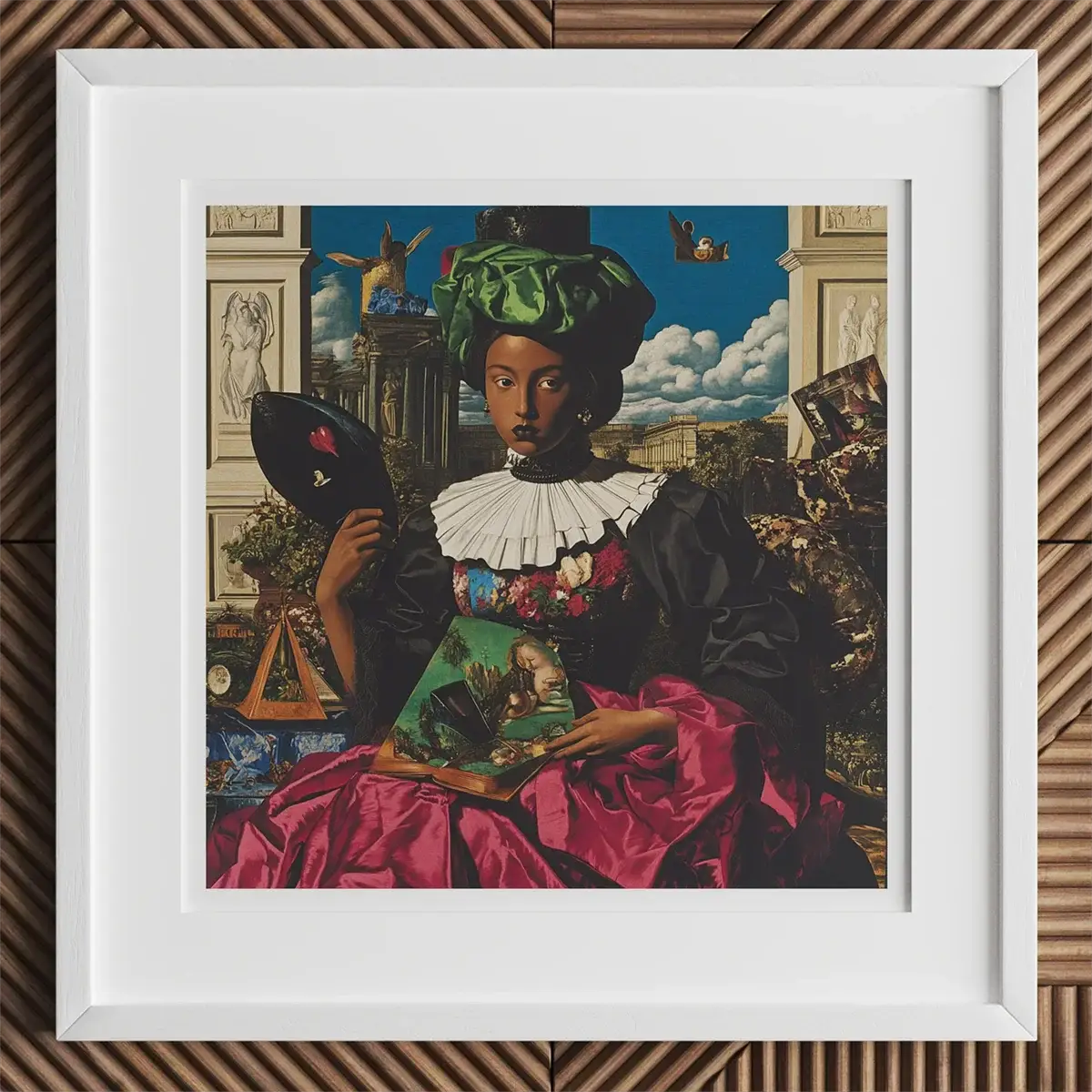
Replanteando el Genio
Un mural a medio terminar, un torso de mármol agrietado, un cielo encendido con estrellas en remolino—la historia del arte está sembrada de proyectos inquietos que insinúan mentes sintonizadas a frecuencias poco comunes. Los clínicos modernos enmarcan esas frecuencias como neurodivergencia. La retro-diagnosis puede convertirse en un juego de salón, pero cuando se maneja con rigor, replantea el genio sin reducirlo. Lo que sigue es una lente, no un veredicto—un caleidoscopio que permite que los maestros del pasado brillen en un nuevo color neurológico.

Leonardo da Vinci – Polímata Impulsado por la Distracción
En 2019, el neurocientífico Marco Catani examinó los cuadernos y relatos de la corte de Leonardo, concluyendo que el trastorno por déficit de atención/hiperactividad explica mejor el enfoque errático del pintor y su legión de encargos sin terminar. La evidencia es circunstancial pero abundante: máquinas de asedio, instrumentos musicales, máquinas voladoras, atlas anatómicos—todos dibujados uno al lado del otro mientras la Adoración de los Magos y otras pinturas quedaban abandonadas. Catani señaló marcadores clásicos de TDAH—ceguera temporal, ráfagas de hiperfoco, disfunción ejecutiva—reflejados en las propias notas marginales de Leonardo: “Dime si alguna vez se hizo algo.”
Las revisiones académicas también notan la escritura en espejo de Leonardo; los estudios de desarrollo vinculan el guion invertido con la coordinación hemisférica divergente encontrada en algunos niños con TDAH. Sus secciones anatómicas—ventrículos cerebrales representados como engranajes entrelazados—sugieren que intentó diagramar el pensamiento mismo... mientras descuidaba facturar a los mecenas. El TDAH, replanteado aquí como neurodivergencia creativa de un polímata, no excusa el retraso pero ilumina sus raíces cognitivas.

Michelangelo Buonarroti – Piedra, Soledad y una Mirada Autista
Donde Leonardo se dispersaba, Michelangelo se enterraba. El psiquiatra Muhammad Arshad y el profesor Michael Fitzgerald argumentó en 2004 que los rituales obsesivos del escultor y su afecto social directo se alinean con rasgos autistas. Las cartas revelan que despreciaba los perfumes de banquete, usaba lana doblada dos veces incluso en julio y dormía con botas mientras pintaba la bóveda de la Capilla Sixtina. Tal autogestión sensorial refleja las rutinas autistas modernas.
Se quejaba de un “olor tan fuerte como la peste”, superponía texturas para la regulación propioceptiva y huía de Roma cuando las demandas papales sobrecargaban su tolerancia. Fitzgerald destaca guiones ecolálicos—“Risponderò dopo” reciclado en cada disputa—mientras señala un brillo hipersistemático: la Capilla Medici sigue una matriz proporcional que los pares renacentistas descifraron solo después de su finalización. La fidelidad anatómica en sus esculturas anticipa el arte savant autista moderno, sugiriendo que una fijación de patrones intensificada puede esculpir mármol en una forma casi biológica.

Vincent van Gogh – Trueno Cromático en el Espectro
Más de 150 diagnósticos persiguen a Vincent van Gogh; la psiquiatra Sandra Friedman agregó trastorno del espectro autista en 2022. Los rasgos se rastrean desde una infancia solitaria hasta las tormentas sensoriales de Arles. Las cartas a Theo rebosan de monólogos obsesivos sobre girasoles y cipreses—una cadencia controlada familiar para los clínicos que entrenan a clientes del espectro. Sus gruesos contornos y halos giratorios reflejan hipersensibilidad sensorial; estudios espectrofotométricos muestran que su paleta favorecía pigmentos con luminancia extrema, alineándose con la afinidad de color autista.
Los datos clínicos refuerzan la relación: los adultos autistas enfrentan un mayor riesgo de trastornos del estado de ánimo, coincidiendo con el trágico arco de Van Gogh. El reconocimiento lo reconfigura—no como un loco romántico sino como un genio neurodivergente cuya variación cognitiva moldeó tanto tormento como triunfo.

Andy Warhol – La Máquina de Patrones del Arte Pop
En el Manhattan de los años 60, Andy Warhol serigrafió a Marilyn en filas de fábrica, archivó recibos de almuerzo en 610 “cápsulas del tiempo” y hablaba en un tono casi monótono. La Sociedad Nacional de Autismo del Reino Unido concluyó que sus hábitos—ceguera facial similar a la prosopagnosia, comidas rituales, fascinación por la repetición—colocan a Warhol en el espectro. Su acumulación categórica refleja un impulso autista por la previsibilidad; los investigadores de museos vinculan tal compulsión archivística a una conectividad mejorada de asociación visual, fertilizando su comprensión tectónica de la iconografía de los medios de comunicación masiva. Externalizar los tirones repetitivos de serigrafía a una tensión de función ejecutiva externalizada—una estrategia de accesibilidad colaborativa mucho antes de que existiera el término, y una utilizada por artistas a lo largo de la historia.

Newton, Einstein, Dickinson – Constelaciones de Divergencia
La alquimia insomne de Isaac Newton, el habla tardía y el pensamiento basado en imágenes de Albert Einstein, Emily Dickinson ’s aislamiento guionado—hábitos archivísticos que encajan con los perfiles autistas modernos. La confirmación sigue siendo esquiva, pero reconocer el pluralismo neurológico contrarresta el mito hagiográfico del genio solitario e inexplicable.
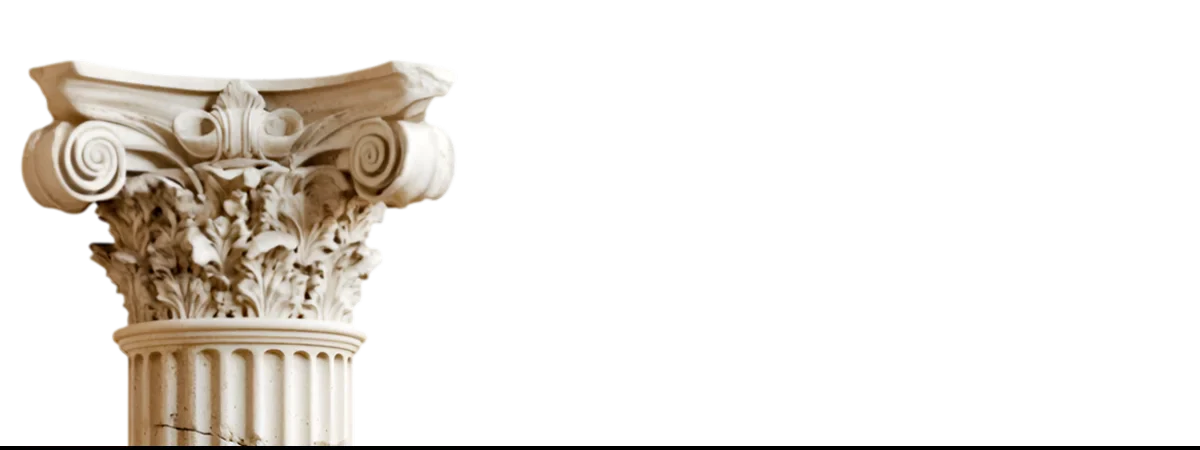
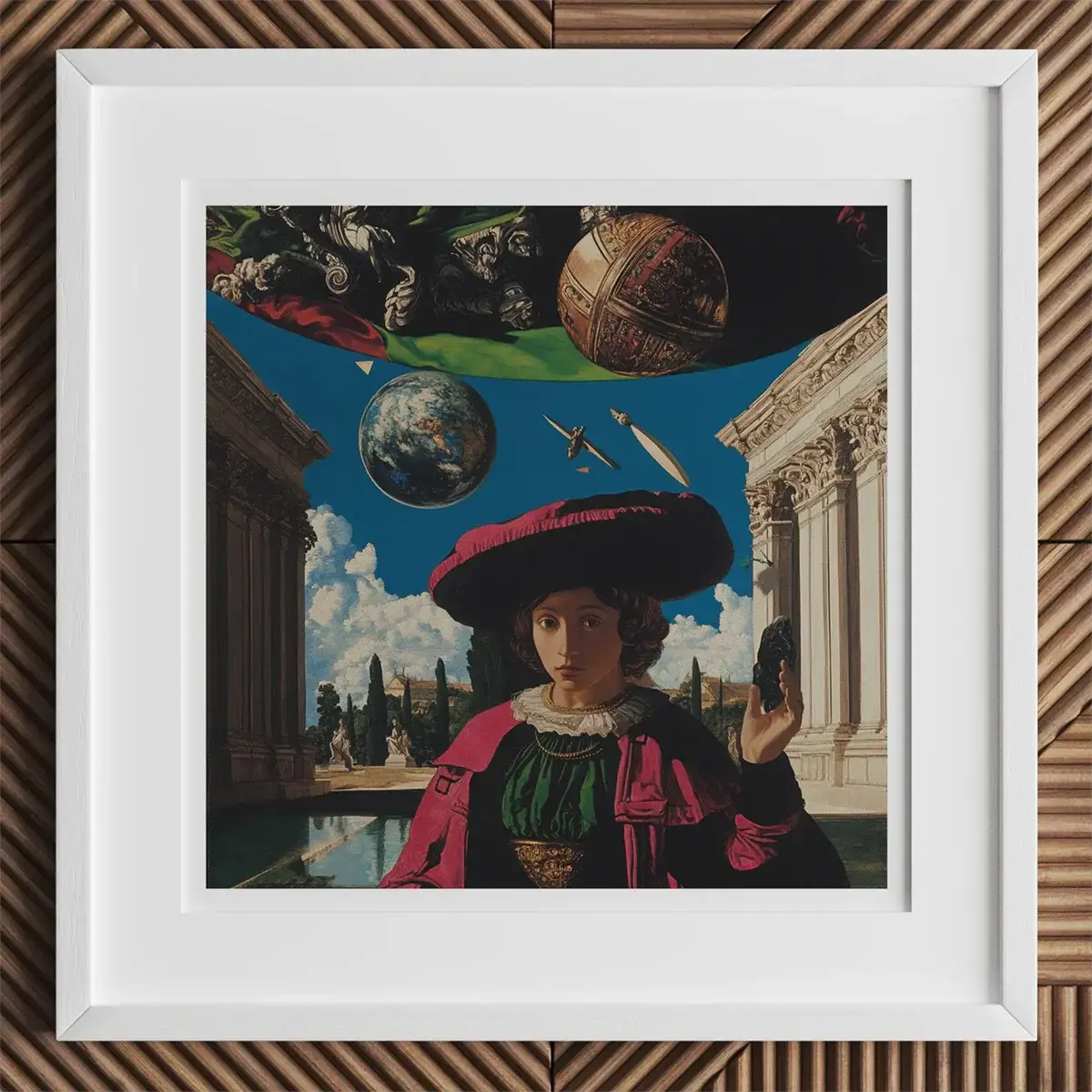
Áreas de Enfoque Especializado
Artes Visuales
Donde una mirada neurotípica registra contorno y tono, la mirada neurodivergente mapea entramados de ángulo y matiz, tratando el lienzo como cálculo.
Artistas disléxicos, cuyas mentes a menudo privilegian el razonamiento espacial sobre la codificación fonética, piensan arquitectónicamente: esbozan el espacio negativo antes que la forma positiva, organizando la composición como si construyeran andamios en el aire.
Los estudios de cohortes de escuelas de arte consistentemente reportan una sobrerrepresentación de estudiantes disléxicos, evidencia de que lo que las aulas tradicionales marcan como deficiencia, los estudios califican como maestría. La investigación de resonancia magnética funcional corrobora el patrón, mostrando una activación aumentada del hemisferio derecho durante desafíos visoespaciales, una firma neural que se alinea con la fluidez escultórica.
Creadores autistas traen otra paleta: enfoque microscópico casado con memoria enciclopédica. La repetición y el patrón, a veces malinterpretados como rigidez, se convierten en su lenguaje de diseño; el color no se elige, se calibra. El artista británico Stephen Wiltshire dibuja famosos paisajes urbanos con detalle forense después de un solo vuelo aéreo, sus dibujos son partes iguales de cartografía y ensueño.
Lo que los observadores llaman “memoria fotográfica” es, para muchos artistas autistas, atención habitual: el mundo llega ya pixelado, listo para un recuerdo preciso. Obras como las de Wiltshire resisten el tropo sentimental de talento a pesar de la discapacidad. Existen debido a la percepción neurodivergente: el detalle del autismo, la cognición espacial de la dislexia, rasgos patologizados en un ámbito, traducidos en gramática estética en otro.
El mercado del arte está aprendiendo lentamente: las ferias de arte outsider ahora atraen a curadores convencionales, y los museos ofrecen horas sensorialmente amigables no como caridad sino como estrategia de expansión de audiencia. La belleza demuestra ser accesible en múltiples anchos de banda.

Música
Escucha atentamente y el timbre neurodivergente se entrelaza a través de siglos de composición. El autismo a menudo trae tono absoluto o casi absoluto, memoria auditiva mejorada y un impulso por descubrir el patrón bajo la melodía.
Los estudios de caso documentan a sabios autistas que replican conciertos de manera literal después de una sola audición; más allá de la replicación, los compositores autistas incrustan estructuras recursivas, repeticiones fractales y equilibrios microtonales que reflejan sus marcos perceptuales.
El TDAH infunde la música con propulsión . El hambre neuroquímico por la novedad convierte la improvisación en una búsqueda de dopamina: solos de jazz que giran a mitad de frase, bateristas que acentúan el ritmo fuera de lo común, productores que superponen género contra género hasta que un nuevo híbrido late.
La neuroimagen encuentra que los intérpretes con TDAH mantienen una activación simultánea en los circuitos de recompensa y las regiones de planificación motora durante la improvisación, alineándose con informes de primera mano de sentir el conjunto como un organismo cinético. El rasgo a veces descartado como impulsividad se convierte en una capacidad de respuesta en vivo en el escenario.
El síndrome de Tourette se cruza con la música de maneras sorprendentes. Caracterizado por tics cinéticos y vocales, una serie de casos de 2020 de percusionistas con Tourette documentó una reducción significativa de tics durante la actuación, lo que sugiere que el ritmo entrena circuitos motores que de otro modo serían hiperexcitables. La creatividad aquí no es una escapatoria de la neurología, sino un dúo con ella.

Literatura y Escritura
El lenguaje escrito, con su ortografía y sintaxis regimentadas, parece un terreno hostil para la dislexia, sin embargo, los autores disléxicos a menudo manejan la metáfora con un barrido panorámico.
La investigación cognitiva muestra participantes disléxicos superando a los controles en tareas de generación de analogías, probablemente debido a redes asociativas fortalecidas que compensan el retraso fonológico. Las narrativas se despliegan como secuencias cinematográficas: los mundos llegan en escala IMAX, luego se traducen a prosa densa con incrustaciones sensoriales.
Los escritores autistas contribuyen a una revolución diferente: un literalismo radical que empuja la descripción a un terreno hiper-específico, un detalle sensorial tan exacto que roza lo sinestésico. Los académicos han especulado que los guiones idiosincráticos y la sintaxis inclinada de Emily Dickinson reflejan patrones de comunicación autista: comprimidos, intensos, resistentes al barniz social.
Los memorialistas autistas contemporáneos extienden ese linaje, creando “noficción sensorial,” en la que la prosa misma aletea, chirría o arde para representar la percepción en lugar de simplemente describirla.
La narración de historias con TDAH corre a través de arcos no lineales, reflejando saltos atencionales. Los capítulos se fragmentan, las líneas de tiempo se entrelazan, los narradores cambian a mitad de página; la estructura refleja la velocidad cognitiva.
Los análisis de la industria editorial notan un reciente aumento en novelas experimentales de autores que se identifican con TDAH, cuyo ritmo episódico ahora se alinea con lectores educados en la cultura del hipervínculo. Lo que una vez se leía como distracción se reencuadra como un punto de vista caleidoscópico.

Innovación Científica y Matemática
En laboratorios y aulas llenas de tiza, la cognición neurodivergente deconstruye marcos de problemas ortodoxos. La inclinación sistemática del autismo sobresale en la integridad del código, la elegancia algorítmica y la demostración de teoremas. Muchos historiadores interpretan la privacidad social de Alan Turing y su profunda fascinación por la abstracción como rasgos autistas que se combinan con su brillantez en la descodificación; su máquina teórica aún sustenta la arquitectura informática moderna.
La dislexia contribuye con un estilo de procesamiento global . Un estudio de la Universidad de Cambridge postula que la cognición disléxica evolucionó para favorecer estrategias de exploración: escanear patrones a gran escala, generando múltiples hipótesis antes de converger. Las encuestas de campo de emprendedores reflejan esto: los fundadores disléxicos pivotan rápidamente sus emprendimientos, detectando adyacencias invisibles para rivales estrictamente analíticos.
El TDAH impulsa las fronteras científicas a través de la tolerancia al riesgo y la rápida generación de hipótesis. Los perfiles neuropsicológicos revelan una búsqueda de novedades elevada y una búsqueda de recompensas modulada por dopamina, rasgos correlacionados con un mayor número de patentes en cohortes longitudinales. Tales investigadores superan estudios incrementales, proponiendo experimentos poco ortodoxos que, cuando son apoyados por colaboradores orientados al detalle, dan lugar a sub-disciplinas completamente nuevas.
El síndrome de Tourette encuentra su nicho en la ingeniería cinética. Informes anecdóticos describen a inventores con Tourette diseñando dispositivos de retroalimentación táctil y algoritmos rítmicos, aprovechando la hipervigilancia motora para lograr avances en tecnología háptica. La cognición encarnada, sentir sistemas a través del movimiento involuntario constante, ofrece una visión intuitiva de la ergonomía y la robótica.
En estos dominios, un tema se repite: los rasgos neurodivergentes considerados pasivos en entornos estandarizados se convierten en ventajas bajo condiciones que valoran la profundidad, la novedad o la audacia. La creatividad no es un rayo de esperanza, es el cable de cobre que conduce la diferencia neurológica al circuito social.

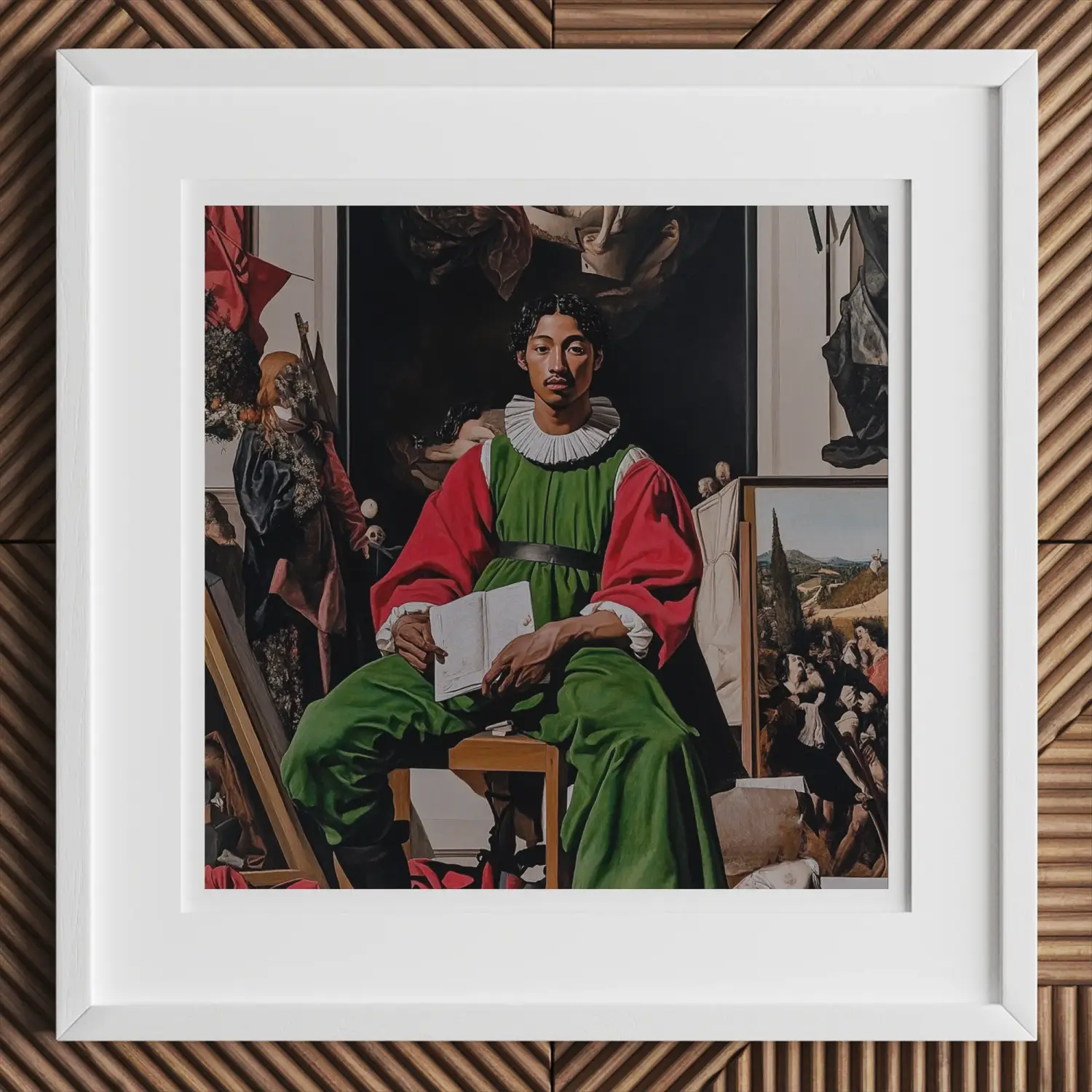
Perspectivas sobre Neuropsicología
Perspectivas Psicológicas sobre Neurodivergencia y Creatividad
La psicología moderna divide el trabajo creativo en dos grandes corrientes: el pensamiento divergente, la catarata que brota posibilidades novedosas, y el pensamiento convergente, el canal que estrecha opciones hacia una solución elegante. Los perfiles neurodivergentes rara vez nadan solo en un arroyo; excavan nuevos afluentes en el lecho del río.
El TDAH tipifica el aumento divergente. En experimentos clásicos de “usos alternativos”—por ejemplo, idear funciones sorprendentes para un clip—los participantes con TDAH generan más ideas, y esas ideas se clasifican más alto en originalidad que los controles neurotípicos.
Los investigadores atribuyen esta fluidez del TDAH a una inhibición latente reducida—el guardián cognitivo que filtra estímulos periféricos. Lo que otros amortiguan como ruido de fondo, las mentes con TDAH admiten, trenzan y tejen en asociaciones sorprendentes. El costo cognitivo es la distracción; el dividendo es la rápida ideación.
El autismo dibuja un contorno diferente: en las mismas tareas los grupos autistas a menudo producen menos respuestas, pero las respuestas puntúan como más raras y conceptualmente densas . Su creatividad se inclina hacia la profundidad en lugar de la amplitud, reflejando la teoría del monotropismo—una atención que se adentra profundamente en intereses estrechos, extrayendo vetas conceptuales no tocadas por exploraciones más amplias. Esta arquitectura atencional también alimenta la destreza convergente: criptógrafos autistas, fenómenos del rompecabezas y depuradores de código encuentran soluciones singulares dentro de laberintos que dejan a pensadores más difusos dando vueltas.
La dislexia, durante mucho tiempo mal vista en los concursos de ortografía, sobresale rutinariamente en la generación de analogías y la creación de imágenes narrativas. En un estudio experimental de narración de cuentos, los estudiantes disléxicos produjeron una proporción significativamente mayor de metáforas novedosas que sus pares emparejados, probablemente un subproducto de la dependencia compensatoria en la cognición visuoespacial sobre los bucles fonológicos. Sus mentes concoctan escenas en IMAX antes de recortarlas en prosa—un activo para la cinematografía, la arquitectura y el diseño experiencial.
Factores de personalidad sustentan estos patrones. El TDAH puntúa alto en búsqueda de novedades y apertura; el autismo puntúa alto en sistematización y apertura sensorial pero más bajo en novedad social; la dislexia combina un razonamiento espacial elevado con una imaginación empática. El cóctel que cada perfil aporta determina cómo germinan las ideas—dispersión lateral, perforación vertical, barrido cinematográfico.
Las pruebas estandarizadas de creatividad a menudo castigan tal variación. Las tareas cronometradas bajo la luz fluorescente recompensan la velocidad y la calibración social; ignoran al artista autista que incuba una idea revolucionaria durante la noche o al pensador con TDAH cuyas epifanías llegan fuera de sincronía con los relojes del supervisor. Los cuerpos profesionales ahora recomiendan evaluaciones específicas de dominio o flexibles en el tiempo para capturar el verdadero talento divergente.
Tales variaciones subrayan por qué la creatividad rígida puede clasificar erróneamente el talento neurodivergente. Una tarea estandarizada cronometrada puede penalizar al diseñador autista que delibera, o al músico con TDAH que idea más allá del timbre y fuera del tiempo. Los protocolos flexibles en el tiempo y los portafolios multimodales mapean el talento de manera más fiel.

Hallazgos Neurocientíficos: Pensamiento Divergente y Función Cerebral
La neuroimagen enmarca la creatividad como un diálogo entre la red de modo predeterminado (DMN)—ensueño, memoria, simulación mental—y la red de control ejecutivo (ECN)—enfoque, inhibición, monitoreo de objetivos. La percepción creativa se enciende cuando estos circuitos oscilan en sincronía: el DMN enciende el enlace novedoso; el ECN lo prueba contra la realidad.
Los cerebros con TDAH exhiben una supresión atenuada del DMN durante las tareas. La resonancia magnética funcional revela una activación concurrente del DMN-ECN durante la generación de ideas, alineándose con las altas puntuaciones de originalidad observadas conductualmente. El inconveniente surge cuando el zumbido del DMN ahoga el filtro del ECN, dispersando los objetivos. La medicación que ajusta el equilibrio de catecolaminas a menudo mejora la persistencia sin anestesiar la novedad.
El autismo presenta una conectividad local aumentada—cableado denso dentro de los vecindarios corticales—y una conectividad de largo alcance reducida . Esto favorece la precisión microscópica, pero puede obstaculizar los saltos entre dominios. Los estudios de creatividad muestran que los participantes autistas sobresalen cuando las tareas aprovechan su experiencia (por ejemplo, estructura musical, patrones numéricos) pero tienen dificultades en tareas asociativas abiertas desvinculadas de las reglas del sistema. Su ruta de innovación se mueve a través de la profundidad del detalle en lugar de la amplitud de la categoría.
La dopamina, el neurotransmisor de la predicción de recompensa, diverge entre perfiles: el TDAH presenta una densidad de transportadores elevada, impulsando la búsqueda de novedades; el autismo muestra una regulación heterogénea de la dopamina, con algunos subtipos exhibiendo una señalización atenuada vinculada a un enfoque repetitivo. La firma bioquímica de la dislexia está menos definida, pero probablemente involucra el dominio del hemisferio derecho en tareas de lenguaje, empujando la resolución de problemas hacia asociaciones espaciales-semánticas.
La electroencefalografía añade matices temporales: los sujetos con TDAH muestran un aumento en la potencia de la banda theta (divagación mental) pero alcanzan una coherencia beta-gamma durante el hiperfoco, reflejando el estado de flujo de los atletas de élite. Los participantes autistas manifiestan ráfagas gamma más agudas durante la discriminación sensorial, correspondiendo a su agudeza en los detalles. Tales ritmos ilustran que la divergencia neural no es una disfunción crónica sino un reajuste dinámico de las frecuencias cognitivas.
Los neurocientíficos advierten contra el reduccionismo: los cerebros existen en gradientes, no en silos diagnósticos. Aun así, estas tendencias iluminan cómo la variación estructural da forma a las vías que recorre una idea desde el destello hasta el descubrimiento.

Dimensiones Sensoriales y de Memoria
La creatividad requiere materia prima. Los perfiles sensoriales neurodivergentes amplían o refinan ese material. La hipersensibilidad autista puede convertir una manzana de la ciudad en una orquesta aural: drones de HVAC, zumbido de neón, ritmos de suelas de zapatos. Donde otros filtran, la percepción autista archiva, generando bases de datos de textura y timbre listas para ser reutilizadas artísticamente. Los estudios PET vinculan esto a una activación aumentada en las cortezas sensoriales primarias y una modulación talámica atípica.
El hiperfoco, compartido entre el TDAH y el autismo, funciona como tiempo de laboratorio involuntario: norepinefrina y dopamina aumentan, el locus coeruleus bloquea la atención y el ruido cortical disminuye. Las horas desaparecen; los estudios de violín, las cadenas de código o los mosaicos de cuentas se acumulan. El estado es impredecible pero puede ser inducido por la novedad (TDAH) o el interés estructurado (autismo). Los flujos de trabajo que permiten inmersiones profundas—bloques largos, plazos asincrónicos—capturan su producción.
Los patrones de memoria diversifican aún más los reservorios de talento: la memoria de trabajo del TDAH fluctúa como estática de radio, pero los eventos emocionalmente significativos se incrustan profundamente, resurgiendo en la composición de canciones o la comedia stand-up. El autismo empareja la memoria episódica con cuadrículas semánticas: un botánico en el espectro recuerda tanto el aroma de un bosque de la infancia como la taxonomía latina de cada helecho. La memoria a largo plazo disléxica favorece los esquemas narrativos y espaciales; los historiadores orales y los diseñadores de productos por igual aprovechan este recuerdo cinematográfico.
Los fenómenos cross-modales—sinestesia—ocurren a tasas elevadas, aproximadamente 7 por ciento en autismo y 10 por ciento en dislexia . Un pintor autista-sinestésico podría saborear el timbre de latón como salinidad, guiando la elección de color; un poeta disléxico podría sentir las letras como texturas, forjando metáforas táctiles. Estos cruces amplían la paleta de recombinación creativa, mezclando códigos sensoriales que la percepción estándar mantiene segregados.
Juntos, todos estos hallazgos reafirman una lección central: la innovación no surge de la optimización genérica, sino de circuitos diversificados. El ancho de banda de resolución de problemas de la humanidad se amplía cuando la sociedad ajusta los entornos a frecuencias neuronales distintas—amortiguando el zumbido fluorescente, permitiendo movimiento en reuniones o enseñando a través de modelos 3D. Bajo tales condiciones, el generador de ideas con TDAH, el creador de patrones autista y el narrador espacial disléxico alcanzan cada uno resonancia cognitiva, generando descubrimientos que la corriente mental uniforme nunca podría concebir.
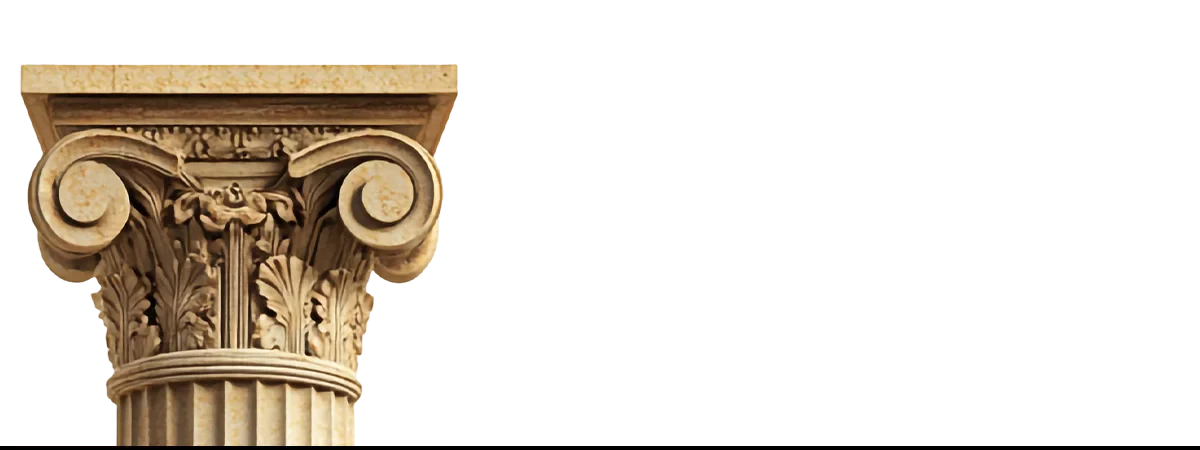

Mecanismos Cognitivos y Neurológicos
La creatividad rara vez viaja por autopistas rectas; la cognición neurodivergente prefiere caminos sinuosos, callejones sin salida y pasos subterráneos ocultos que convergen en la percepción.
El trabajo de resonancia magnética funcional en TDAH muestra un cambio rápido entre la red de modo predeterminado del cerebro (DMN), la fuente de asociación espontánea, y la red positiva para tareas (TPN), que dirige el enfoque orientado a objetivos.
Este microciclo, medido en milisegundos, alimenta la ideación de "salto de rana": un comediante con TDAH salta sobre remates que ningún escritor lineal detecta; un diseñador de productos combina dinámicas de patineta con polímeros aeroespaciales de la noche a la mañana. La atención rebota, pero la invención aterriza.
La cognición autista, en contraste, se adentra. Los experimentos de seguimiento ocular revelan trayectorias de escaneo idiosincráticas—barridos láser a través de bandas de textura que otros omiten. Las conversaciones con autistas reflejan esto: un solo concepto desencadena un descenso monotrópico a través de etimología, física y mito—hilos aparentemente disjuntos hasta que su patrón subyacente emerge. Túneles profundos que extraen mineral invisible para bandejas más amplias. Como criptógrafos y visualizadores de datos que detectan anomalías que los sistemas automatizados pasan por alto.
Las mentes disléxicas aportan otra geometría. La imagen neuro-lingüística muestra una activación reducida en los bucles fonológicos pero un mayor compromiso del hemisferio derecho vinculado a la síntesis visoespacial. El pensamiento llega como un cuadro panorámico; las analogías surgen entre modelos mentales distantes.
Cuando un novelista disléxico compara el dolor con "la gravedad de una luna ausente", la metáfora se siente fresca porque los datos espaciales y emocionales comparten vecindarios neuronales que otros cerebros segregan.

Hiperfoco, Percepción y Ajuste Sensorial
La caricatura pública presenta el TDAH como inquieto, el autismo como distraído—pero ambos albergan un modo turbo: la hiperfocalización. Durante estos episodios, la dopamina y la norepinefrina aumentan, el locus coeruleus fija el objetivo y el ruido cortical disminuye. Las tomografías PET comparan el patrón con atletas de élite en estado de flujo. Para los creadores con TDAH, la hiperfocalización se enciende cuando la novedad y la relevancia personal se alinean; un ingeniero de software puede programar doce horas seguidas. La hiperfocalización autista se activa a través de fascinaciones estructuradas: los números primos, los horarios de trenes antiguos o los tejidos textiles reciben devoción monástica.
El estado resiste el encendido voluntario, pero los entornos pueden invitarlo: bloques ininterrumpidos, iluminación personalizada y mínima multitarea atraen la hiperfocalización del TDAH; las rutinas predecibles y los conjuntos de reglas explícitas invitan a la inmersión autista. Una prueba de campo en la industria por Atlassian informó una reducción del 48 por ciento en el tiempo de corrección de errores después de instituir “focus sprints.”
Lo que los clínicos etiquetan como sobre-responsividad sensorial también puede ser potencia de archivo. Los participantes autistas a menudo almacenan más datos en bruto por momento — mostrando hiperactivación en las cortezas sensoriales primarias y filtrado talámico atípico. Un fotógrafo nota “cincuenta verdes donde otros ven uno,” traduciendo diferencias de matiz mínimas en vistas galardonadas. Los músicos con oído absoluto, sobrerrepresentados entre los grupos autistas, captan sobretonos armónicos que los oídos típicos pasan por alto.
El TDAH se inclina hacia la búsqueda sensorial. La expresión elevada del receptor D4 de dopamina persigue la estimulación; los percusionistas con TDAH disfrutan de los pulsos del subwoofer, los diseñadores de moda anhelan experimentos táctiles con terciopelo. El circuito de novedad del cerebro recompensa los entornos caóticos, convirtiendo el deseo sensorial en audacia estética.
La sinestesia, que ocurre en aproximadamente el cuatro por ciento de la población general, aumenta al siete al diez por ciento entre los grupos autistas y disléxicos. Un compositor que saborea el metal como salmuera organiza la orquestación por paladar; un artista gráfico que escucha colores calibra el matiz a la melodía. Tal codificación cruzada amplía las matrices creativas: los sentidos se fusionan, las metáforas se literalizan.

Reconocimiento de Patrones y Flexibilidad Cognitiva
El reconocimiento de patrones es la columna vertebral de la innovación. La cognición autista sobresale a través de un funcionamiento perceptual mejorado: la conectividad local densa agudiza el procesamiento de detalles, mientras que la reducción de la distracción de señales sociales libera ancho de banda analítico. Un informe técnico de 2020 del Centro de Excelencia de Defensa Cibernética Cooperativa de la OTAN encontró que los analistas autistas detectan firmas de malware un 14.7 por ciento más rápido que sus pares neurotípicos.
El razonamiento disléxico prospera en la amplitud analógica . El trabajo de estimulación magnética transcraneal de Muggleton y sus colegas muestra que la corteza prefrontal dorsolateral mantiene una red asociativa más amplia, lo que permite el pensamiento de solución—rango: múltiples andamios hipotéticos erigidos antes de estrecharse. Esto resulta ventajoso en el pensamiento de diseño y la ideación de emprendimientos donde las primeras respuestas rara vez sobreviven al contacto con el mercado.
El TDAH proporciona flexibilidad cognitiva—cambio rápido de tareas impulsado por el flujo de dopamina estriatal. Aunque la inhibición sufre, la ventaja es un rápido cambio de contexto: los emprendedores con TDAH iteran prototipos rápidamente, descartando costos hundidos sin arrastre ruminativo. Un meta-análisis de 2020 confirmó puntuaciones elevadas de ideación divergente en desafíos de ingeniería abiertos.
El síndrome de Tourette, aunque menos estudiado, demuestra ventajas en el aprendizaje de patrones motores. Los tics repetitivos sensibilizan los circuitos de los ganglios basales, mejorando el tiempo rítmico. Una serie de casos en Movement Disorders mostró que los bateristas con Tourette retienen metros complejos con una fidelidad poco común.
Las métricas de flexibilidad varían: el autismo muestra alta adaptabilidad dentro de sistemas explícitos (aperturas de ajedrez, lenguajes de programación) pero baja tolerancia al cambio de reglas no señaladas; el TDAH invierte el perfil. Los equipos corporativos que combinan estos rasgos—anclas de sistema autistas con conductores de cambio de TDAH—reportan menos estancamientos de proyectos y sesiones de lluvia de ideas más ricas.

Síntesis: Una Orquesta Cerebral Polifónica
Los mecanismos neurodivergentes no son solistas competidores sino secciones instrumentales de una sinfonía:
-
TDAH proporciona percusión—ritmos impulsivos y cambios de tempo.
-
Autismo maneja las cuerdas—patrón preciso, fidelidad tonal.
-
Dislexia comanda los metales—amplios hinchazones temáticos.
-
Tourette añade vientos de madera—trinos inesperados que animan el motivo.
La creatividad florece cuando la orquestación valora cada timbre. Diseñar para esa orquesta significa calibrar lugares de trabajo y aulas como salas de conciertos: acústica variable, reguladores de luz, sincopación de horarios. Cuando tales ajustes se convierten en infraestructura, estalla la hiperconcentración, se desbloquean archivos sensoriales y la cognición no lineal compone obras que la corriente mental uniforme nunca podría puntuar.
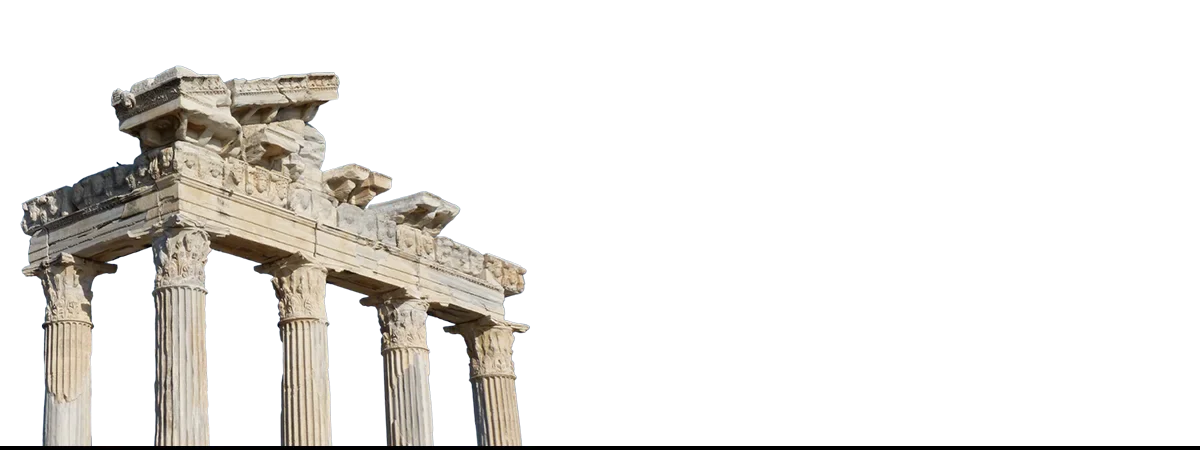
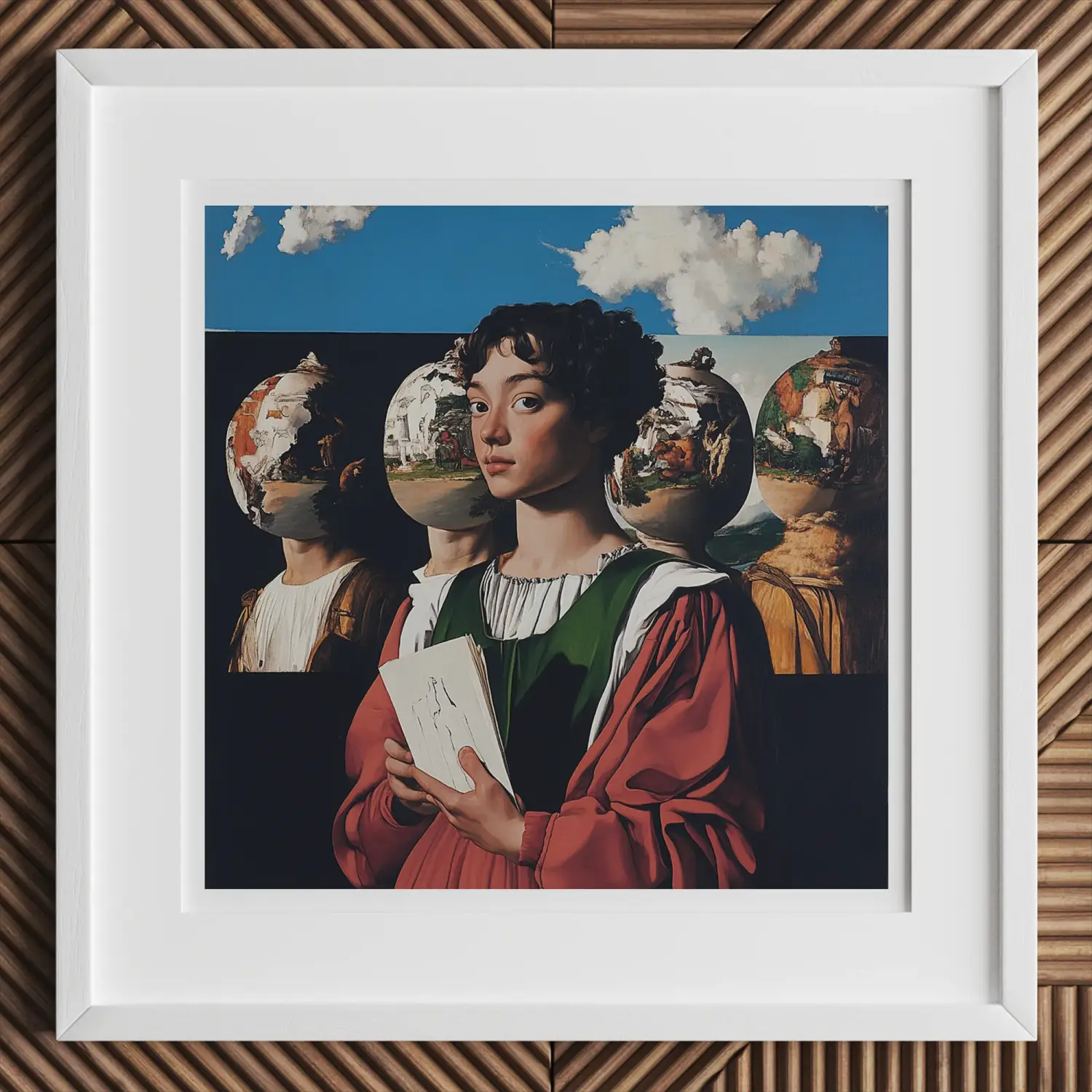
La Neurodivergencia y la Creatividad Son Inseparables
Un Pacto Neurobiológico
La creatividad exige dos hazañas neurológicas: generar variabilidad y luego esculpir coherencia. Los cerebros neurodivergentes están conectados para este dialecto. La inhibición latente reducida del TDAH inunda la mente con materia prima, mientras que la conectividad local aumentada del autismo la esculpe en una forma intrincada. El dominio del hemisferio derecho en la dislexia proporciona un contexto panorámico, y la hipersincronía de los ganglios basales en el síndrome de Tourette refina la precisión rítmica. Ningún neurotipo completo el circuito por sí solo, sin embargo, las configuraciones divergentes traen tanto chispa como cincel en proporciones que los cerebros neurotípicos a menudo carecen.

Lógica Evolutiva
Desde una perspectiva evolutiva, la heterogeneidad cognitiva es un seguro. Durante las sequías del Paleolítico, un observador de patrones hiperconcentrado podría notar cambios sutiles en la migración; un improvisador en busca de novedades inventa una nueva trampa. Los estudios genéticos encuentran alelos de riesgo vinculados al TDAH y la dislexia circulando a frecuencias estables—evidencia de un beneficio adaptativo.
La historia repite el patrón. Los mecenas florentinos financiaron las obsesiones cinéticas de Leonardo da Vinci, Bletchley Park aprovechó la monomanía lógica de Alan Turing, y los bateristas de Manhattan de los años 50 como Buddy Rich—cuyos biógrafos describen florituras similares a tics—impulsaron el latido del bebop.
Siempre que las sociedades tratan la idiosincrasia como un activo en lugar de una aberración, los aceleradores culturales se encienden. Las eras rígidas—fábricas victorianas, eugenesia de principios del siglo XX—muestran lo contrario: la innovación se marchita cuando la divergencia se patologiza.

Prueba de Concepto Cultural
Los picos de innovación en la historia coinciden con bolsillos de tolerancia para mentes atípicas:
- El Renacimiento Florentino ofreció mecenazgo que protegió las obsesiones cinéticas de da Vinci.
- Las salas de códigos de Bletchley Park aprovecharon la soledad social y la monomanía lógica de Turing.
- La escena del jazz de Nueva York en los años 50 convirtió los patrones de batería touretticos en el latido del bebop.
Siempre que las sociedades crean nichos donde la idiosincrasia es un activo en lugar de una aberración, aparecen aceleradores culturales.
Por el contrario, las eras de conformidad rígida—fábricas victorianas, eugenesia de principios del siglo XX—sofocan la producción precisamente al patologizar las mismas mentes.

Imperativo Económico
Las economías modernas del conocimiento funcionan con la novedad.
Una encuesta de innovación global de McKinsey de 2023 a 600 CEOs clasificó la “velocidad de innovación” como la métrica de supervivencia más importante. Al mismo tiempo, Gallup informa que el 85 por ciento de los empleados neurodivergentes enmascaran o tienen un bajo rendimiento en flujos de trabajo no inclusivos.
Cuando las empresas adaptan entornos—espacios sensoriales ligeros, colaboración asincrónica, roles basados en fortalezas—Boston Consulting Group encuentra que los ingresos de nuevas líneas de productos pueden aumentar un 19 por ciento en tres años. Ignorar la divergencia, y pagas en patentes perdidas y rotación.

Hacia un Común de Creatividad
Si la divergencia es el motor, las sociedades deben convertirse en mejores mecánicos:
-
Estudios sensoriales escalonados en escuelas de arte y laboratorios de I+D reducen el agotamiento y aumentan la producción.
-
Contratación basada en portafolios sobre presentaciones revela el brillo oculto por la ansiedad de las entrevistas.
-
Políticas de propiedad intelectual neuro-inclusivas otorgan regalías equitativas a inventores que presentan a través de AAC o dictado.
-
Diagnósticos de Creatividad 2.0—tareas como la Prueba de Construcción Creativa multimodal y sin tiempo superan los puntos de referencia de Torrance en la predicción de patentes innovadoras.

Conclusión: La Cláusula de Inseparabilidad
Despoja a Jano de una cara y el tiempo colapsa; despoja a la humanidad de la neurodivergencia y la creatividad se marchita. La variación no es ornamental—es estructural.
La paleta sinestésica del pintor, la recursión obsesiva del matemático, el staccato cinético del coreógrafo, todos surgen de arquitecturas neuronales que alguna vez fueron desestimadas como defectuosas. Honrar la creatividad es, por lo tanto, honrar la neurodivergencia; suprime una y hambrientas la otra.
El próximo salto de la civilización—concreto negativo en carbono, criptografía segura cuántica, literatura multisensorial—casi con certeza germinará en mentes que desafían las normas prevalecientes.
Nuestra tarea no es ni normalizar ni romantizar esas mentes, sino construir un mundo sintonizado a su frecuencia. Solo entonces el título de este ensayo se cristaliza no como argumento sino como axioma: La neurodivergencia y la creatividad son, y siempre han sido, inseparables.

Lista de Lectura
Banissy, Michael J., et al. “Sinestesia: De la Ciencia al Arte.” Nature Reviews Neuroscience 20, no. 9 (2019): 651-62.
Bednarik, Robert G. Mitos sobre el Arte Rupestre. Oxford: Archaeopress, 2016.
Bednarik, Robert G. “Trastorno Cerebral y Arte Rupestre.” Cambridge Archaeological Journal 23, no. 1 (2013): 69-81.
Bogousslavsky, Julien. “El Último Mito de Giorgio de Chirico: Arte Neurológico.” Frontiers in Neurology and Neuroscience 27 (2010): 29-45.
Carson, Shelley H. “Desinhibición Cognitiva, Creatividad y Psicopatología.” Perspectivas en Ciencia Psicológica 6, no. 5 (2011): 499-506.
Catani, Marco, y Paolo Mazzarello. “Leonardo da Vinci: Un Genio Distraído.” Cerebro 142, no. 6 (2019): 1842-56.
Derby, John. “Nada Sobre Nosotros Sin Nosotros: El Deservicio de la Educación Artística a las Personas con Discapacidad.” Estudios en Educación Artística 54, no. 4 (2013): 376-80.
Friedman, Sandra L., Lori Krier, e Ivan K. Arenberg. “Autismo Añadido al Perfil Conductual de Vincent van Gogh.” Revista Internacional de Ciencias Forenses 7, no. 1 (2022): 1-5.
Hall, Jennifer. “Los Detalles Neurofenomenológicos de la Instalación de Arte Interactivo Tal Como Pueden Ser Interpretados a Través de Merleau-Ponty.” Tesis de maestría, Instituto de Estudios Doctorales en las Artes Visuales, 2009. http://jenhall.org/merleau.html.
Heaton, Peter. “Autismo, Música y Tono Absoluto: Una Visión General.” Transacciones Filosóficas de la Sociedad Real B 364, no. 1522 (2009): 1445-52.
Houtepen, Jaris, et al. “Superposición Genética Entre TDAH y TEA.” Psiquiatría BMC 21 (2021): 284.
Humphrey, Nicholas. “Arte Rupestre, Autismo y la Evolución de la Mente Humana.” Revista Arqueológica de Cambridge 8, no. 2 (1998): 165-91.
James, Ioan. “Autismo y Arte.” En Trastornos Neurológicos en Artistas Famosos: Parte 3, editado por Julien Bogousslavsky et al., 168-73. Basilea: Karger, 2010.
Kellman, Julia. “Dando Sentido a la Visión: Autismo y David Marr.” Investigación en Artes Visuales 22, no. 2 (1996): 76-89.
LeFrançois, Brenda A., Robert Menzies, y Geoffrey Reaume, eds. Cuestiones de Locura: Un Lector Crítico en Estudios Canadienses de la Locura. Toronto: Canadian Scholars, 2013.
Mulvenna, Catherine M. “Sinestesia, las Artes y la Creatividad: Una Conexión Neurológica.” En Trastornos Neurológicos en Artistas Famosos: Parte 2, editado por Julien Bogousslavsky y Michael G. Hennerici, 206-22. Basilea: Karger, 2007.
Podoll, Klaus, y Derek Robinson. Arte de la Migraña. Berkeley: North Atlantic Books, 2009.
Podoll, Klaus, y Derek Robinson. “Experiencias de Migraña como Inspiración Artística en un Artista Contemporáneo.” Revista de la Sociedad Real de Medicina 93 (2000): 263-65.
Podoll, Klaus, y Duncan Ayles. “Inspirado por la Migraña: Las Pinturas ‘Strip!’ de Sarah Raphael.” Revista de la Sociedad Real de Medicina 95 (2002): 417-19.
Sacks, Oliver. Un Antropólogo en Marte. Nueva York: Knopf, 1995.
Schachter, Steven C. “El Arte Visual de Artistas Contemporáneos con Epilepsia.” Revisión Internacional de Neurobiología 74 (2006): 119-31.
Schneck, Jerome M. “Henry Fuseli, Pesadilla y Parálisis del Sueño.” JAMA 207 (1969): 725-26.
Selivanova, A. S., et al. “La Creatividad de Leonardo da Vinci y el Trastorno por Déficit de Atención e Hiperactividad.” Revista Médica de los Urales 3 (184) (2020): 128-30.
Singer, Judy. “¿Por Qué No Puedes Ser Normal por Una Vez en Tu Vida?” En Discurso sobre la Discapacidad, editado por M. Corker y S. French, 59-67. Buckingham: Open University Press, 1999.
Spikins, Penny, et al. “¿Cómo Explicamos los ‘Rasgos Autistas’ en el Arte del Paleolítico Superior Europeo?” Arqueología Abierta 4, no. 1 (2018): 263-79.
Thorpe, Vanessa. “¿Era el autismo el secreto del arte de Warhol?” The Observer, 14 de marzo de 1999.
Wiltshire, Stephen. Ciudades flotantes. Londres: Michael Joseph, 1991.
Wiltshire, Stephen, y Hugh Casson. Dibujos. Londres: Dent, 1987.















